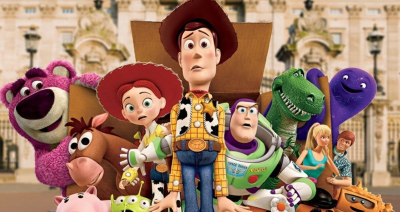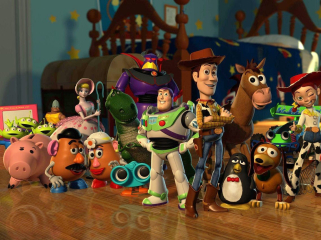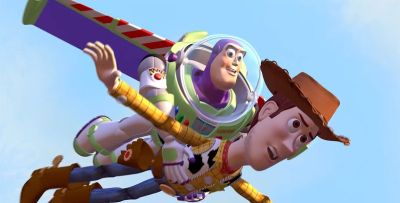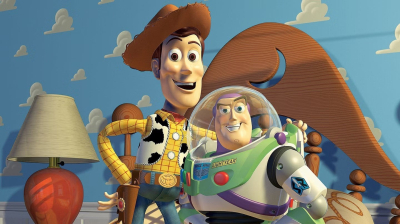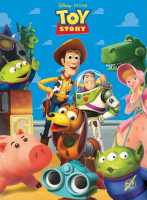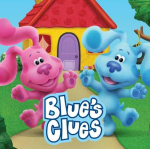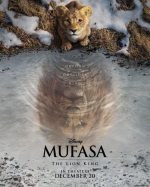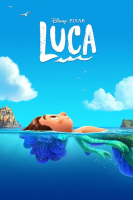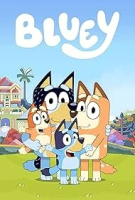Toy Story
When I first heard of "Toy Story," I was skeptical. A cartoon about toys coming to life? It sounded juvenile and perhaps, just a little bit simplistic. But what I found upon watching it was far more than just a tale of animated playthings. This film, with its rich storytelling and groundbreaking animation, is nothing short of a masterpiece. It invites viewers into a vibrant universe where toys experience adventures, friendships, and existential dilemmas, all hidden from the watchful eyes of their human owners. Intrigued by both the concept and execution, I dove deeper into the world created by Pixar, which left a lasting impression on me.
The Pioneering Journey of "Toy Story"
Released in 1995, "Toy Story" marked a pivotal moment in cinematic history as the first full-length feature film to be entirely computer animated. Director John Lasseter and his team at Pixar Animation Studios pioneered advanced techniques to bring this innovative story to life. This historical context is not just a footnote but essential to understanding what makes "Toy Story" unique. It was a bold step on a path less traveled, proving that computer-generated imagery (CGI) could be more than a tool for visual effects—it could drive an entire film.
This movie was not just a technological marvel; it represented a significant departure from traditional animation, offering unprecedented flexibility in framing and movement. In many ways, the film was a gamble. The filmmakers were exploring uncharted territory, and they did so with a fearless creative spirit. It's fascinating to consider how many elements had to align for "Toy Story" to succeed and how it managed to exceed all expectations.
Characters that Come Alive
At the heart of "Toy Story" are its characters, each filled with personality and depth. Woody, the cowboy doll voiced by Tom Hanks, is the leader of the toy room. His journey of self-discovery and acceptance is a narrative arc that resonates on many levels. Woody is endearing because he embodies qualities we recognize in ourselves—confidence brushed with insecurity, and leadership tested by vulnerability.
Then there's Buzz Lightyear, voiced by Tim Allen, whose arrival causes a ripple effect in the toy hierarchy. Buzz’s initial belief that he is a real space ranger rather than a toy, injects both humor and pathos into the story. Watching Buzz grapple with the realization of his true nature is both heartwarming and amusing; it's a rarity to see such depth in an animated figure. Each toy, from Mr. Potato Head to Slinky Dog, contributes their unique quirks and adds layers to the narrative tapestry.
The Magic of Animation
From the opening scenes, it's clear that "Toy Story" is something special. The animation is not merely a backdrop for the story but a participant in it. Every movement, every shadow, and every piece of texture feels alive, creating an immersive experience. The intricacy with which the toys and their world are rendered is nothing short of astonishing, even by today's standards.
One of the most compelling aspects of the animation is its ability to convey emotion without words. The subtleties in character expressions and body language speak volumes, often revealing more than the dialogue itself. It's a testament to the artistry and dedication of the animation team that these non-human characters feel so entirely human.
The Suburban Playland
The setting of "Toy Story" is just as important as the characters who inhabit it. The animators crafted a world that mirrors the imagination of a child—a place where ordinary rooms transform into extraordinary landscapes filled with possibilities. Whether it’s the cozy familiarity of Andy’s room or the chaotic nightmare of Sid’s bedroom, each environment is meticulously designed to enhance the story.
Part of the genius of "Toy Story" is how it manages to turn mundane suburban settings into a vibrant playground for adventure. Seeing the world from the toys' perspective offers a fresh take on everyday life, making the film relatable while igniting a sense of wonder.
The Humor and Heart
Laughter is a language that transcends age, and "Toy Story" speaks it fluently. The film is brimming with clever humor, ranging from slapstick to satirical wit. The interactions between the toys are frequently hilarious, underpinned by comedic timing and voice acting that hits every mark. But beyond the humor, what truly sustains the film is its heart.
At its core, "Toy Story" is a story about friendship, loyalty, and acceptance. It explores complex themes such as jealousy and self-worth with grace and empathy. These emotional undercurrents give the film a universal appeal, resonating profoundly with viewers of all ages. The relationship between Woody and Buzz, filled with both conflict and camaraderie, is a touching portrayal of evolving friendship.
Narrative Craftsmanship
A well-crafted narrative is the backbone of any great film, and "Toy Story" excels in this regard. The screenplay, penned by Joss Whedon, Andrew Stanton, Joel Cohen, and Alec Sokolow, is tight and engaging, with each scene propelling the story forward. The pacing is impeccable, ensuring that there’s never a dull moment.
What I appreciate most is the film's ability to interweave small subplots into the larger narrative, enriching the story without overshadowing the primary arc. Whether it's the soldiers' espionage mission or Buzz's attempts at flight, these subplots add depth and texture, making the story more nuanced and engaging.
An Emotional Roller Coaster
While "Toy Story" is an exhilarating ride filled with laughter, it’s also an emotional journey. The filmmakers expertly balance tension and release, guiding viewers through a roller coaster of feelings. They deftly weave moments of suspense and tenderness, creating a rich emotional tapestry that captivates and resonates.
One of the film’s most poignant moments is Buzz’s realization that he is a toy, not a real space ranger. This revelation strikes a chord, reflecting the human condition of coming to terms with reality and limitations. It’s a deeply moving scene that elevates the film from mere entertainment to an exploration of identity and purpose.
The Soundtrack’s Soul
Music plays a critical role in "Toy Story," providing a backdrop that enhances emotional impact and underscores the film's themes. The score, composed by Randy Newman, accompanies the story with both whimsy and sincerity. Songs like "You've Got a Friend in Me" capture the essence of friendship and adventure, becoming as iconic as the film itself.
Newman's music weaves seamlessly into the narrative, amplifying moments of joy and sorrow without overpowering the visuals. It's a brilliant example of how a film’s soundtrack can serve as both an emotional anchor and a storytelling device.
The Art of Voice Acting
Behind every animated character is the voice actor who gives it life, and "Toy Story" boasts a stellar cast. Tom Hanks and Tim Allen lead the charge, delivering performances that are both memorable and authentic. Their voices lend depth to Woody and Buzz, elevating them beyond mere animation into fully-realized characters.
The supporting cast is equally commendable. Don Rickles, Wallace Shawn, Jim Varney, and others add flavor and humor to the ensemble, each contributing to the rich tapestry of characters. It's a testament to the power of voice acting that these performances remain as captivating today as they were upon the film's release.
The Legacy of "Toy Story"
"Toy Story" wasn’t just a film; it was the dawn of a new age in animation. Its success paved the way for a new generation of animated features, influencing the industry in profound ways. The film’s legacy is evident in the countless animated works that followed, many of which owe a debt to the groundbreaking techniques and storytelling methods pioneered by Pixar.
Beyond its impact on animation, "Toy Story" sparked a franchise that has continued to delight audiences over the years. Its sequels have further explored and expanded the universe, each installment adding layers to the characters and their stories, cementing "Toy Story" as a cultural icon.
Why "Toy Story" Captivates
What makes "Toy Story" so captivating is its ability to appeal to both the child and adult within us. It blends humor with heartfelt moments, balancing a simple premise with profound themes. Children delight in the whimsical adventures of Woody and Buzz, while adults are moved by the deeper undercurrents of identity and belonging.
There's an authenticity to the film that resonates with viewers of all ages. It reminds us of the magic of childhood while simultaneously reflecting the complex emotions of growing up. This duality is what gives "Toy Story" its enduring charm and timelessness.
My Personal Impressions
Reflecting on my experience with "Toy Story," I am filled with admiration for its storytelling and innovation. It’s a film that defies categorization, bridging the gap between children’s entertainment and sophisticated narrative. What struck me most was its capacity to evoke genuine emotion—a rarity in animation that speaks to its artistry and heart.
Watching "Toy Story" as an adult, I found myself reminiscing about my own childhood and the toys that once captured my imagination. The film’s ability to both entertain and evoke nostalgia is a testament to its universal appeal and enduring magic.
Conclusion: A Timeless Tale
As I conclude my journey through "Toy Story," I am left with a profound appreciation for its achievement. This film is a testament to the power of imagination, innovation, and storytelling. It’s not just a landmark in animation but a landmark in cinema—a piece of art that continues to inspire and entertain.
"Toy Story" is more than the sum of its parts; it’s a joyful celebration of the tales that come to life when we allow our imaginations to soar. As the credits rolled, I realized that in watching "Toy Story," I had not only witnessed a film but experienced a story that will continue to shine bright in the annals of cinematic history.
